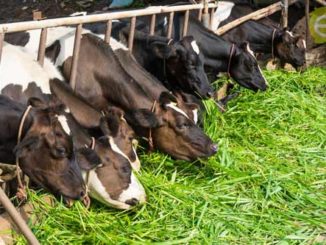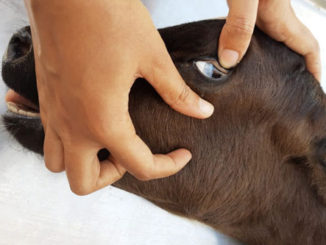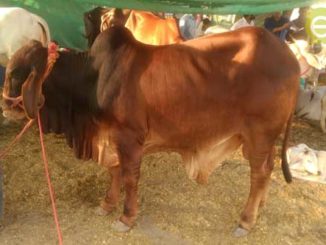India ranks first in milk production accounting for 18.5 percent of world production (Economic survey 2015-16). The value of India’s milk output during 2012-13 has been estimated at over Rs.2900 billion, higher than the combined value of other major agricultural crops like paddy, wheat and sugarcane (National Dairy Development Board 2014). Milk production increased from 155.5 million tonnes in 2015-16 to 165.4 million tonnes in 2016-17 registering a growth of 6.4 percent. Percapita availability of milk has sharply increased from 233 gm per day in 2004-05 to 355 gm per day in 2016-17 (Basic Animal Husbandry Statistics 2017).
Therefore ensuring quality nutrition for dairy animals is of utmost importance. Compounded cattle feeds are a balanced source of essential nutrients which are daily required for body maintenance, growth as well as milk production. It should be manufactured using good quality grains and oil cakes along with brans, molasses, common salt in addition to minerals and vitamins. It needs to be highly palatable for animals to ensure their good health and production. Compounded feed contains nutrients like protein, energy, minerals and vitamins which are essentially required for milk production of dairy animals. Pregnant animals should be fed extra cattle feed for thorough development of foetus so that reproductive efficiency along with quantity as well as fat content of milk improves. Growing animals need to be fed atleast 1 to 1.5 kg of compound feed every day. Different categories of animals need to be fed according to their individual needs worked out in consultation with an animal scientist/nutritionist.
The quality of compounded feeds is determined by its constituent raw materials like cereal grains, cereal byproducts, oilseeds and various oilseed meals, agro-industrial byproducts as well as various feed additives used in feed formulation. A quality feed will definitely supply all nutrients in sufficient quantity along with high digestibility and adequate intake. Even the efficiency of feed utilization is determined is dependent to a large degree on the quality of animal feeds. In the oilseed cake category, soyabean, groundnut, mustard, cottonseed and linseed are also used in preparing cattle feeds. Many times improper processing can also reduce feed quality, for example, during roasting, overheating of soyabean can result in loss of nutrients and also steam treatment can cause rancidity in rice polish.
Therefore, quality control should be ensured at various points-
- Raw materials and finished products need to be carefully assessed
- Storage of the raw materials and finished products should be as per rules and regulations to prevent spoilage
- Production should be carried out as per accepted norms
In India, quality control is regulated by Bureau of Indian Standards, established under BIS Act 1986. The main objective of quality control of animal feedstuffs is to ensure that a farmer should obtain feeds that are unadulterated, true to their nature and produce desired results as expected. Quality norms which are regularly followed by Indian feed industry should be aligned with the international standards to increase their credibility and acceptance. Updating of the legislations already in place should be carried out in accordance with the changing needs of the industry and a more vigilant regulatory framework must be ensured. Adherence to legislations should be carried out in word and deed. Both the production potential and quality of progeny can be ensured with quality animal feeds.
The feeds can be evaluated using three kinds of tests: Physical, Chemical and Biological. Physical evaluation requires a highly trained person. The colour of feed ingredients reveals their quality to a great extent. Grain maturations, conditions during feed storage, toxin contamination and use of pesticides changes the appearance of feed stuffs. Size of grains gives indication of its energy value as the small grain size lowers the Metabolizable Energy value due to high proportion of seed coat. Smell is also a very big indicator as one can easily establish fungal contamination with musty odour. Taste change can also be an indication of contaminants. Rice polish gets bitter in taste due to fatty acid rancidity. Touching feed ingredients can indicate whether they have optimum moisture content. Clumps in compounded feeds can be due to high content of moisture or due to lack of proper storage or may also be caused by packing of fresh still warm solvent extracted meal. Sound of spilling grains can definitely indicate if they are fully dry or not.
For chemical evaluation of feed stuffs and estimation of their nutrient contents, an analytical laboratory is a must. The feed must be analyzed for proximate principles. If an oil seed meal is found with low crude protein and high crude fiber, it may indicate its adulteration with a fibrous substance. Similarly amount of acid insoluble ash indicates the adulteration with sand or dirt as the case may be. Ingredient description along with general nutrient specifications are given by BIS for the guide of consumers as well as producers and manufacturers. For example plant protein and animal protein can be identified in feed. Carbohydrates in plant (cellulose and starch) when react with iodine and chlor-zinc iodine solution, the starchy tissue release a blue colour, however a yellow colour indicates animal fiber. Biological evaluation requires the use of animals for various digestion and metabolism trials.
The products which are manufactured need to be carefully analyzed and then compared with the available standards. There may also be seasonal variations in the standards. Animal nutritionist should approve the finished product on basis of various specifications and only then the finished product is cleared for marketing. Utmost precision should be ensured in compounding feed as per the suggested feed formula. However it should be kept in mind that not only quality but good packaging and safe transport to the sale outlet is equally important.






Be the first to comment